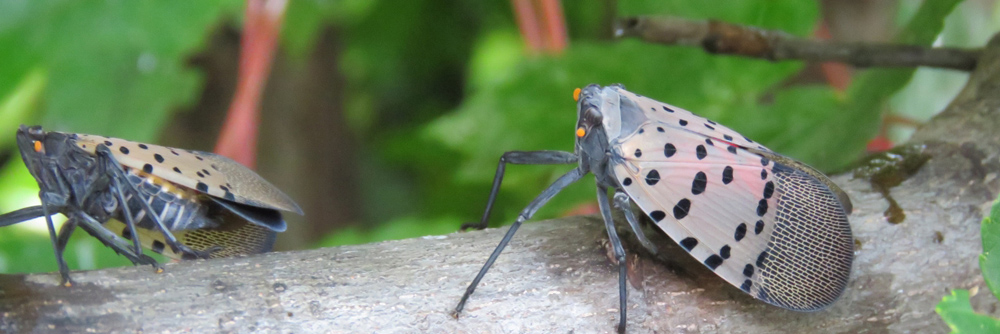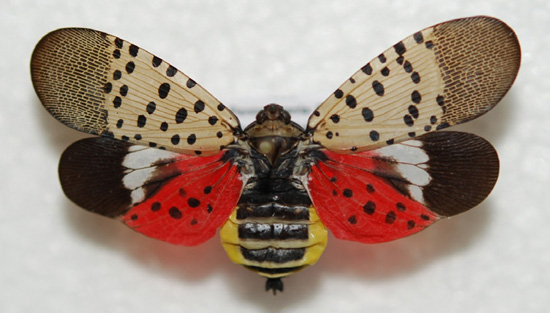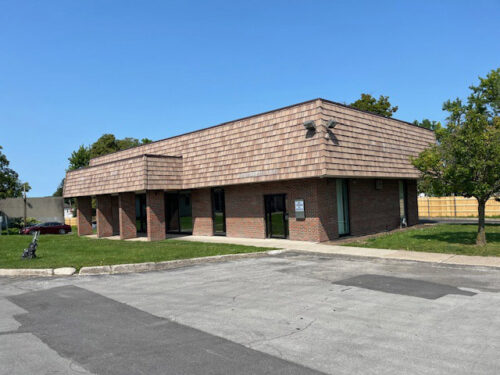Residents asked to be on the lookout for Spotted Lanternfly in WNY

The New York State Department of Agriculture and Markets is asking residents in Western New York to be on the lookout for Spotted Lanternfly (SLF), after a population was found in the Buffalo area in recent weeks. SLF is a destructive pest that feeds on more than 70 plant species, including tree-of-heaven, and plants and crops that are critical to New York’s agricultural economy, such as grapevine, apple trees, and hops. The invasive was first observed in New York State on Staten Island in August 2020, and since then the population has been reported in all New York City boroughs, Long Island, Port Jervis, Sloatsburg, Orangeburg, Ithaca, Binghamton, Middletown, Newburgh, Highland, and now in the Buffalo area.
State Agriculture Commissioner Richard A. Ball said, “We are concerned about the significant number of adult Spotted Lanternfly that have been found in Buffalo, especially with its proximity to the Concord grape growing area in Western New York. SLF can have a devastating impact on vineyards, as we’ve seen in neighboring states, so we need everyone’s help to be on the lookout for this invasive and to report it immediately.”
The Department’s Division of Plant Industry inspectors responded to reports of SLF in a residential area of Buffalo adjacent to an active rail line. As of September 9, over 100 adults have been found. Agriculture and Markets staff will continue to survey the surrounding areas in the coming days. Although the population is significant, the area was surveyed in April of 2022 and no egg masses were found, and no old egg masses have been found during the current survey.
While surveys in the area are ongoing, the Department is asking for the public’s help in slowing down the spread of SLF in this area by reporting any sightings immediately to agriculture.ny.gov/reportSLF.
In addition to reporting, residents are asked to:
•Take pictures of the insect, egg masses, or infestation you see and, if possible, include something for size, such as a coin or ruler.
•If possible, collect the insect. Place in a bag and freeze, or in a jar with rubbing alcohol or hand sanitizer.
•Note the location (street address and zip code, intersecting roads, landmarks, or GPS coordinates).
Adult SLF are easy to identify. They are approximately one inch long and half an inch wide at rest, with eye-catching wings. Adults are active from July to December and begin laying eggs in September. Signs of an SLF infestation may include:
•Sap oozing or weeping from open wounds on tree trunks, which appear wet and give off fermented odors.
•One-inch-long egg masses that are brownish-gray, waxy and mud-like when new. Old egg masses are brown and scaly.
•Massive honeydew build-up under plants, sometimes with black sooty mold developing.
While these insects can jump and fly short distances, they spread primarily through human activity. SLF can lay their eggs on any number of surfaces, such as vehicles, stone, rusty metal, outdoor furniture, and firewood. Adult SLF can hitch rides in vehicles, on any outdoor item, or cling to clothing or hats, and be easily transported into and throughout New York, so residents are being asked to be vigilant.
The public is also encouraged to thoroughly inspect vehicles, luggage and gear, and all outdoor items for egg masses and adult SLF. If SLF adults are found, residents should remove them and scrape off all egg masses.
For more information on Spotted Lanternfly, visit https://agriculture.ny.gov/spottedlanternfly.
Provided information and photo



